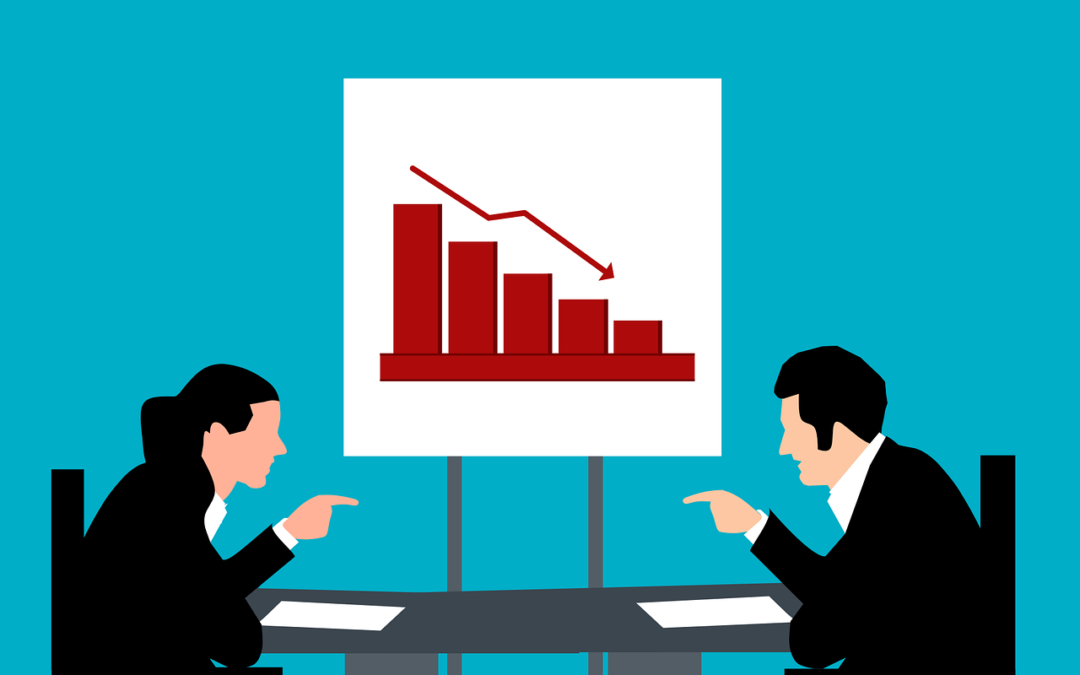
by Emily Hric | Jul 1, 2024 | Employee Retention, Human Resources, Mental Health in the Workplace
When are Employee Assistance Programs (EAPs) useful? Imagine you’re an HR leader. You’re trying to support an employee going through a tough time, but you’re unsure where to start. That’s where Employee Assistance Programs (EAPs) come in.
Employee Assistance Programs (EAPs) are voluntary programs. Employers offer them to help employees with personal or work-related problems. These programs generally provide free and confidential services. They address a wide range of issues affecting mental and emotional health, such as:
- Alcohol and drug abuse
- Stress, grief, family issues
- Psychological disorders
In today’s digital age, technology plays a significant role in enhancing these programs. They make them more accessible and effective. In this article, Launchways will guide HR leaders in implementing tech-driven EAP solutions. We want to help you meet the evolving needs of their workforce.
The Evolving Needs of Employees
To understand the evolving needs of their employees, businesses need to understand the modern workforce. Workers today have different needs and challenges than they previously did.
Generational Differences and Expectations
As the world changes, so do employee needs. Different generations in the workforce have unique expectations from their employers.
For instance, Millennial and Gen Z employees often seek employers who offer robust mental health support. They enjoy flexible working conditions. They value technology-driven solutions that provide immediate and personalized assistance.
On the other hand, Baby Boomers and Gen X might prioritize traditional counseling methods. However, they are gradually adapting to digital resources.
The Rise of Remote and Hybrid Work
To further complicate matters, remote and hybrid work models have become the norm for many companies. This shift has significantly impacted employee well-being.
Working from home can blur the lines between personal and professional life. That can lead to increased stress and burnout. Accessible EAP resources are crucial in this context. They offer support wherever employees are located.
Mental Health Awareness
The importance of mental health support in the workplace cannot be overstated. With increasing awareness, employees expect their employers to provide comprehensive mental health resources.
Employee Assistance Programs (EAPs) are at the forefront of this support. They offer counseling and crisis intervention services.
The Role of Technology in EAPs
Many leaders find that leveraging technology helps them effectively implement Employee Assistance Programs.
Digital Platforms and Mobile Apps
One of the significant benefits of integrating technology into EAPs is the accessibility it offers. Mobile apps and digital platforms allow employees to access support services anytime, anywhere.
Apps can provide online counseling sessions. That makes it easier for employees to seek help without scheduling in-person visits.
Data Analytics for Personalized Support
Technology enables the collection and analysis of data to identify employee needs. It can then tailor their support programs accordingly.
By analyzing usage patterns and feedback, employers can refine their EAP offerings. They can ensure they meet the specific needs of their workforce.
AI and Chatbots for Instant Assistance
AI-driven chatbots can provide immediate support and resources to employees. These chatbots can answer common questions. They offer initial counseling and can direct employees to appropriate resources. Plus, they are available 24/7, ensuring continuous support.
Implementing Automated EAP Solutions
By taking the following steps to integrate technology into EAPs, employers can better meet their employees’ needs.
Assessing Employee Needs
The first step in integrating technology into Employee Assistance Programs is understanding what employees need. Conduct surveys. Utilize data analytics to gather insights into the specific challenges your workforce faces.
This information will guide the selection of appropriate tech solutions.
Choosing the Right Tech Solutions
When selecting EAP platforms and tools, consider factors like the following:
- User-friendliness
- Scalability
- Data security
Look for solutions that offer a range of services and ensure they are accessible on multiple devices.
Training and Onboarding
Introducing new technology can be challenging. Provide comprehensive training and onboarding. That ensures employees are comfortable using the new EAP tools. Offer tutorials, webinars, and continuous support to facilitate smooth adoption.
Employee Assistance Programs: Benefits and Considerations
Decision-makers have much to consider when making bold moves to improve the lives of their employees.
Benefits of Tech-Enhanced EAPs
Technology makes Employee Assistance Programs (EAPs) more accessible, encouraging more employees to use these services. Digital platforms and mobile apps offer convenience, making it easier for employees to seek help when needed.
In fact, companies that have implemented tech-driven EAPs often see higher usage rates. Plus, tech-enhanced EAPs have been shown to improve employee mental health and productivity. Statistics show that employees who use EAP services report reduced stress levels. They also experience increased job satisfaction.
Challenges and Considerations
Overcoming resistance to change may be a challenge. Employees might be resistant to adopting new technologies. Address this by highlighting the benefits and providing continuous support. Engage employees in the process by seeking their feedback and making necessary adjustments.
Other potential challenges in implementing tech solutions include privacy and data security. Protecting employee data is crucial when implementing tech solutions. Therefore, the platforms you choose must comply with data protection regulations. They should have robust security measures in place.
Key Points
In summary, tech-enhanced EAPs offer numerous benefits. These include improved accessibility, higher utilization rates, and better employee outcomes. By leveraging digital platforms, HR leaders can create effective and supportive EAPs.
Action Steps for HR Leaders
- Conduct surveys to assess employee needs.
- Choose user-friendly and secure tech solutions.
- Provide comprehensive training and onboarding.
- Continuously gather feedback to improve EAP offerings.
Future Trends in EAP Technology
Looking ahead, we can expect further advancements in EAP technology. For example, virtual reality counseling is just one of the trends that will shape the future of employee assistance programs.
By embracing these innovations, companies can enhance their EAPs. Here at Launchways, we want to ensure you provide the best possible support for your employees.

by Emily Hric | May 22, 2024 | Company Culture, Employee Engagement, Employee Retention
As we wrap up Mental Health Awareness Month, we reflect on “Building Positive Company Culture.” We consider what the phrase means. We also contemplate its profound connection to mental well-being in the workplace. A positive company culture isn’t just about perks and policies. It’s about creating an environment where employees feel supported, valued, and empowered.
Imagine a workplace where employees are not just colleagues but a cohesive team. It is where conflicts are resolved respectfully, and everyone feels valued and motivated. This is the essence of a positive company culture. It plays a pivotal role in shaping employee relations.
Here, Launchways delves into some of the best practices for HR professionals in small businesses. This includes leveraging automated solutions where applicable. Read on as we examine what it takes to cultivate and maintain a positive company culture.
Understanding Employee Relations in Building Positive Company Culture
Employee relations refer to interactions between employees and their employers. They focus on fostering a positive work environment. In the context of mental health, a positive company culture fosters open communication, reduces stigma around mental health issues, and promotes work-life balance.
Effective employee relations are vital for employee engagement and retention. They have a direct impact on productivity and overall company success.
Best Practices for Managing Employee Relations
Clear Communication Channels
Clear and transparent communication is the cornerstone of building positive company culture. As HR professionals, communication is vital. Communication channels between management and employees should be open, honest, and easily accessible.
HR professionals can create channels for employees to express their needs without fear of judgment. This can include anonymous feedback systems or dedicated support channels.
Setting up regular team meetings can often significantly improve team collaboration and morale. Utilizing communication tools can help with that.
Guide Positively
Positive guidance plays a crucial role in building positive company culture. It shapes employee behavior and attitudes toward company values. HR professionals can guide employees positively by leading by example. They can offer the following:
- Mental health workshops
- Mentorship opportunities
- Resilience training
HR can also provide constructive feedback and promote self-care practices among employees.
For instance, implement a mentorship program. This will not only help new hires acclimate faster but also foster a culture of continuous learning and growth.
Interview For Culture Fit
Hire employees who align with the company’s culture and values. This can be key to building positive company culture. During interviews, focus not only on skills and experience but also on assessing cultural fit.
Ask questions that gauge a candidate’s alignment with your company’s values. For example, assess their strategies for managing stress. Ask them to elaborate on their potential contributions to a positive work culture.
Employee Feedback and Recognition
Soliciting feedback from employees is essential for boosting morale and engagement. Implement feedback mechanisms such as surveys or suggestion boxes. Recognize and reward efforts that contribute to a mentally healthy workplace. These could include participation in wellness activities or initiatives promoting work-life balance.
Remember to acknowledge and reward outstanding performance.
Consider using automated recognition programs to streamline the process. That ensures consistency in recognizing employees’ efforts.
Conflict Resolution Strategies
Building a positive company culture includes proactively addressing conflict. Conflicts are inevitable in any workplace. How they are handled, however, can significantly impact company culture. Ensure that conflicts are resolved in a respectful and supportive manner.
Implement effective conflict resolution techniques such as active listening, mediation, and problem-solving discussions.
Utilize automated tools for tracking and managing conflicts. That helps to ensure timely resolution and minimize disruptions to workflow.
Leveraging Technology for Employee Relations
How can leveraging technology help when building positive company culture? Integrating technology and automation into employee relations practices can streamline HR processes. It helps improve overall efficiency. Explore HR software. Seek platforms that facilitate employee communication, feedback collection, and conflict resolution.
These tools not only save time but also enhance the employee experience. They do this by providing easy access to essential HR resources.
Benefits of Automated Solutions in Employee Relations
Automated solutions offer numerous benefits in managing employee relations. They improve efficiency by reducing manual tasks, minimize errors, and ensure consistency in HR processes.
Take, for example, automated onboarding processes. These can help new hires feel welcomed and integrated from day one. That contributes to a positive first impression of the company.
Key Points
As Mental Health Awareness Month concludes, consider the importance of company culture. Building a positive company culture goes hand in hand with supporting employees’ mental well-being. Building and maintaining a positive company culture requires proactive effort. It requires the adoption of best practices in employee relations.
By leveraging the following, HR professionals can create a thriving work environment. Employees feel valued and motivated when offered:
- Clear communication
- Positive guidance
- Cultural fit upon hiring
- Feedback and recognition
- Conflict resolution strategies
Leveraging technology and automation where applicable streamlines HR processes. That enhances the overall employee experience.
By doing this consistently, small business owners and HR leaders can build a positive workplace culture. This culture will attract top talent, foster teamwork, and drive success. Learn more here.
Building a positive company culture is not just a goal. It’s a continuous journey toward creating a fulfilling and productive work environment for everyone. Embracing mental health as a core aspect of building a positive company culture benefits employees. It also contributes to a more resilient and productive organization overall.

by Emily Hric | May 13, 2024 | Company Culture, Conflict Resolution, Employee Retention
Workplace mediation techniques can be a game-changer in fostering a harmonious work environment. Imagine a scenario where a small company team needs better communication. They’ve led to unresolved conflicts. Tensions rise, affecting collaboration and morale, ultimately impacting productivity. This is where modern workplace mediation techniques can help.
Small business owners and HR leaders often face challenges in managing workplace conflicts. These challenges can range from interpersonal disputes to complex organizational issues. All of these can hinder teamwork and hinder productivity. The need for modern mediation techniques has never been more crucial. They address the challenges proactively while maintaining a positive and productive work atmosphere.
At Launchways, we understand the importance of effective conflict resolution in the workplace. Understanding workplace mediation techniques is just one step in resolving conflicts.
Understanding Workplace Conflicts
Workplace conflicts occur when employees or managers disagree or have disputes. These conflicts can cause problems like lower productivity and morale. Unresolved conflict can lead to worse work quality and more employee turnover.
Common reasons for conflicts at work include:
- Misunderstandings or unclear communication can create tension.
- Differences in personalities and how people work can lead to disagreements.
- Changes in the company can make employees uncertain and cause conflicts.
Modern workplace mediation techniques can be instrumental in preventing and resolving conflict on the job.
Styles of Mediation
Mediation is a powerful tool for resolving conflicts. Various styles fit different situations. Here are six types of workplace mediation techniques:
Facilitative Mediation: This type of mediation involves a mediator. Their job is to help parties talk and find their own solutions without giving their own opinions.
Evaluative Mediation: Mediators of this type suggest solutions and discuss legal rules.
Transformative Mediation: This method helps people understand each other better. It helps improve their overall relationship.
Med-Arb: Parties agree on how to solve the problem. They start by talking (mediation) and then, if necessary, making a final decision (arbitration).
Arb-Med: First, an expert decides on a solution. Then, they help the parties agree to it.
E-mediation: It’s like regular mediation but online. It uses video calls to talk and solve problems.
The Role of Modern Mediation Techniques
Modern workplace mediation techniques have evolved to become effective tools in resolving workplace conflicts. Unlike traditional adversarial approaches, mediation focuses on collaboration and finding mutually beneficial solutions.
These techniques have many advantages. They help resolve conflicts faster. That saves time and money because companies don’t have to spend as much on long disputes. Also, successful mediation improves employee satisfaction. Employees who feel respected are more likely to remain at their jobs.
Key Modern Mediation Techniques
Open Communication Strategies:
Open communication plays a vital role in addressing conflicts early before they escalate. Fostering transparent and constructive communication channels among team members is essential.
Encourage active listening, sharing perspectives openly, and resolving misunderstandings promptly. Establishing open communication can prevent conflicts from turning into major issues.
Conflict Coaching and Training:
Conflict coaching is an effective method to empower employees to handle conflicts independently. During coaching sessions, employees can learn how to manage emotions.
That will help them handle conflicts better. They can improve their communication. Conflict resolution training programs also teach valuable skills like problem-solving, negotiation, and empathy. That benefits the whole team.
Mediation Software and Automated Solutions:
Modern mediation software and automated solutions help organizations handle conflicts more efficiently. They often offer case management, data analytics, and integration with HR systems. These help make workplace mediation techniques smoother and more effective.
Implementing Modern Mediation Techniques
Implementing modern workplace mediation techniques requires a structured approach to ensure effective conflict resolution. Here’s a step-by-step guide for small business owners and HR leaders:
- Set expectations: Begin the mediation with a brief introduction. Remind the parties of any time limits, expected behaviors, and confidentiality rules.
- Opening statements: Allow each person a brief 1-2 minute opening statement. This allows them to express what they hope to achieve.
- Set the agenda: Develop a neutral agenda based on the opening statements. List all concerns from each party without judgment or blame.
- Work through the agenda: Discuss each agenda item calmly. Focus on concerns rather than disagreements on facts. Mediator intervention may be necessary to steer discussions.
- Break out privately: Provide a private session for parties. There, they can discuss their feelings, concerns, and potential resolutions individually, without mediator suggestions.
- Rejoin and set agreements: Reconvene to generate resolution options for each agenda item. Refine them until both parties agree. Record agreements made.
- Break out for review: Conduct a second private session to review agreements. Provide coaching if disputes persist.
- Document agreement: Bring parties together to review, finalize, and document agreements. If an agreement isn’t reached on all items, consider involving an external mediator.
Applying these mediation techniques significantly improves the chances of a successful mediation meeting. Leadership support, ongoing training, and regular evaluation of mediation strategies are crucial. These elements sustain effective conflict resolution practices within an organization.
Benefits of Embracing Modern Mediation Techniques
Using modern mediation techniques can bring many advantages to your workplace:
- Better Workplace Culture: These techniques encourage open communication and trust among team members. They create a positive and welcoming work environment.
- Reduced Turnover: Resolving conflicts quickly and fairly helps keep valuable employees. They are less likely to leave due to unresolved issues.
- Increased Productivity: By addressing conflicts early, you can prevent disruptions. You keep everyone focused on their tasks, boosting overall productivity.
- Cost Savings: Mediation is a cost-effective way to resolve disputes. It saves time and resources.
Key Points
In summary, modern mediation techniques offer significant benefits. They improve workplace culture, reduce turnover, boost productivity, and save costs.
Small business owners and HR leaders should consider adopting these techniques. Automated solutions can help companies improve organizational performance and handle conflicts effectively.
At Launchways, we understand the importance of resolving conflicts efficiently. Therefore, we offer tailored solutions to help your business succeed.
Transitioning to modern mediation practices can lead to happier employees. By mastering workplace mediation techniques, you can anticipate increased productivity and a more successful organization.

by Jim Taylor | May 6, 2024 | Conflict Resolution, Employee Retention, Human Resources, Uncategorized
To understand the importance of mastering employee grievance procedures, you should consider the snowball effect. Most HR consultants can have stories of minor grievances that quickly escalate into larger conflicts. Those tend to significantly affect team morale and, ultimately, its productivity. Without a structured grievance procedure in place, the situation can become almost impossible to manage.
In the dynamic landscape of modern workplaces, maintaining peace and productivity is paramount. Companies of all sizes find effective employee grievance procedures crucial in business. They help resolve conflicts in a timely manner, thereby fostering a harmonious work environment.
However, small business owners and HR leaders often face challenges when managing grievances manually. They can benefit from streamlined and efficient solutions, like those found with Launchways. In this context, understanding the fundamentals and importance of clear employee grievance procedures becomes imperative.
What Is a Workplace Grievance?
A workplace grievance is when an employee formally or informally complains about their work environment, conditions, or treatment. These complaints can cover individual issues or larger group or union-related problems. They are all critical, and they all need to be handled and resolved correctly.
Types of Employee Grievances
Employee grievances can be categorized into individual, group, or union-related issues. Each type requires specific approaches and considerations to achieve fair and satisfactory outcomes in the grievance-handling process.
Individual Grievances
Individual grievances occur when a single employee experiences a problem in the workplace. Common issues include:
- Pay and benefits disputes
- Excessive workload concerns
- Workplace favoritism complaints
- Bullying or workplace discrimination issues
- Lack of transparency in promotions
Group Grievances
Group grievances involve a collective complaint from multiple employees with similar concerns. Examples include:
- Gender pay gap disputes
- Employee schedule disagreements
- Grievances related to organizational changes
Union Grievances
Unions file grievances on behalf of workers when they believe their rights are not being upheld. Examples of union grievances include:
- Improper deduction of union dues by management
- Violations of collective bargaining agreements
Understanding these different types of grievances helps organizations address employee concerns effectively.
Understanding Employee Grievance Procedures
Effective employee grievance procedures are crucial for dealing with conflicts quickly and keeping the workplace peaceful.
Importance of Clear Procedures
Clear and transparent grievance procedures are important for solving conflicts effectively in organizations. When employees know exactly what to do and how their concerns will be handled, it builds trust.
This trust makes employees more comfortable sharing their grievances. In turn, that ensures that problems are dealt with fairly and quickly.
Legal Compliance
Another essential part of employee grievance procedures is understanding their legal implications and compliance requirements. Businesses need to follow these legal requirements to fairness in the process.
Following the law protects employees and keeps the organization safe from legal problems.
Creating a Workplace Grievance Policy
Creating clear employee grievance procedures is essential for managing grievances well in an organization. They outline:
- What steps to follow
- Who is responsible for what
- What are the deadlines for resolving issues
- What to do if a grievance isn’t resolved
Having a detailed policy helps everyone know what to expect. It promotes fairness and openness when dealing with employee concerns.
Benefits of Grievance Procedures
Employee grievance procedures offer significant benefits to organizations and employees alike, such as tthte following:
Promoting Transparency
Grievance procedures promote transparency in addressing employee concerns, fostering a positive work culture.
Resolving Issues Proactively
By addressing grievances promptly, organizations can prevent conflicts from escalating and impacting productivity.
Improving Employee Relations
Effective employee grievance procedures demonstrate that the organization values employee feedback. They also show their commitment to addressing concerns and lead to improved employee relations.
Employee Grievance Process Steps
The process for employee grievance procedures typically includes the following steps:
- Receipt of Grievance: The process begins with receiving and documenting the grievance.
- Investigation and Analysis: The HR team investigates the grievance. It gathers relevant information and analyzes the situation.
- Resolution and Communication: A resolution is proposed once the investigation is complete. It is then communicated to the parties involved and implemented.
- Follow-Up and Monitoring: Follow-up measures ensure that the resolution is adequate. Ongoing monitoring helps identify any recurring issues or trends.
Grievance Procedure Best Practices for Managers
Managers play a crucial role in the grievance process. Best practices for managers include the following:
- Active listening
- Maintaining confidentiality
- Conducting fair investigations
- Providing regular updates to employees involved
Are Automated Solutions Right for Your Employee Grievance Process?
Launchways offers a comprehensive approach. They help companies assess whether automated solutions are suitable for their people processes. Here’s how Launchways can assist:
Evaluation of Needs
Launchways begins by evaluating your company’s specific needs and requirements. This assessment considers factors such as the existing processes and desired outcomes.
Software Selection Guidance
Based on the evaluation, Launchways provides guidance on choosing the right automated software. They consider scalability, ease of use, and data security features to ensure a seamless fit.
Customized Training and Integration Support
Launchways offers full support to help organizations adopt and use automated grievance systems smoothly. Services include:
- Customized Training Solutions: Tailored training programs are designed to fit your company’s specific processes. These programs help employees use the automated grievance system effectively.
- Integration Support: Assistance is provided in integrating the automated system into your existing HR processes.
Teaming up with Launchways helps companies make smart choices about using automated solutions. This can lead to better efficiency, accuracy, and happier employees.
Key Points
Effective employee grievance procedures are crucial for workplace peace and a positive culture. Here are the things to remember:
- Understanding Grievance Procedures: Mastering these processes is vital. Launchways’ automated solutions can benefit small businesses and HR leaders.
- Importance of Clear Procedures: Transparency in grievance handling builds trust. It encourages employees to voice concerns promptly.
- Legal Compliance: Adherence to legal aspects ensures fairness in grievance resolution.
- Creating a Grievance Policy: Establishing a clear policy is foundational for effective grievance management.
- Automated Solutions’ Benefits: Launchways provides comprehensive support, including training and integration assistance.
Mastering grievance procedures is key to workplace harmony. Consider Launchways’ automated solutions for effective grievance management.

by Devon Bellamy | Feb 14, 2024 | Employee Benefits, Employee Recruitment, Employee Retention, Human Resources
Staying on top of employee benefits trends helps employers and HR leaders adapt to current labor challenges. The quest to attract and keep talented employees has been an ongoing challenge for employers, especially since the onset of the COVID-19 pandemic. While the labor market 2024 is expected to cool slightly, the competition for skilled workers will remain fierce.
To stay competitive, employers must stay nimble and adapt to emerging labor and market trends. Understanding this year’s key employee benefit trends is crucial for retaining and attracting top talent in an evolving job market.
At Launchways, we know how important employee benefits are to attracting and retaining top talent. Here are some of the top trends:
Managing Healthcare Costs
Healthcare costs continue to rise. This can be attributed to factors like inflation, provider shortages, and the lingering effects of the pandemic. In fact, employers expect healthcare expenses to surge by 6% to 8.5% in 2024.
This poses significant challenges in maintaining affordable benefits for employees.
Many employers are implementing a variety of cost-saving measures to mitigate these expenses. These include implementing strategies like the following:
- Altering health plan designs
- Expanding virtual health opportunities
- Offering voluntary benefits
- Optimizing pharmacy management strategies
- Promoting preventive care services
- Revisiting cost-sharing arrangements
- Using healthcare analytics to streamline workflows
Preventive Care Services
High inflation and rising medical expenses cause many employees to avoid seeking medical attention. They fail to take steps for necessary preventative care in an attempt to avoid recurring and crippling medical bills. Unfortunately, this can worsen long-term health outcomes, resulting in increased costs to both employers and employees.
Despite concerns about rising healthcare costs, employers recognize the value of preventive care in maintaining employee health and reducing long-term expenses. Educating employees about the benefits of routine care is essential for promoting overall well-being.
Employers are emphasizing preventive care services and benefits education to encourage employees to prioritize their health, maximize benefits, and reduce healthcare costs in the long run.
Increased Flexibility and Personalization
In 2023, numerous employers struggled with finding the optimal benefits plan. Today’s diverse workforce spans multiple generations and backgrounds. Hence, employers are increasingly challenged to provide benefits that cater to everyone’s needs.
In 2024, personalized and flexible benefits options are gaining traction to accommodate individual preferences.
Popular benefit customization options could include the following:
- Flexible work arrangements with convertible paid time off
- Comprehensive medical coverage with extended leave
- Diverse wellness programs
- Flexible spending accounts
- Customized retirement plans
- Domestic partner benefits
Personalized learning opportunities are also becoming more popular benefit options.
Balancing Worker Flexibility with Employer Return-to-Office Mandates
In recent years, employers have offered remote and flexible work options to attract talent in a tight labor market. Many have reversed their position by issuing mandates to bring their employees back to the office.
As organizations transition back to the office, balancing flexibility with in-person requirements is crucial. Employers risk losing talent and hindering diversity, equity, and inclusion (DEI) efforts if they fail to accommodate employees’ preferences for remote or hybrid work arrangements.
Therefore, some employers are adopting hybrid work models. This enables them to prioritize employee well-being while offering incentives such as commuter benefits, childcare assistance, and catered meals to encourage in-person attendance.
Making Employee Mental Health a Priority
Mental health issues among employees are a growing concern. Factors like stress, financial worries, and pandemic-related disruptions can exacerbate it. In turn, employee mental health issues can significantly impact productivity in a company. In fact, addressing mental health in the workplace is crucial for maintaining productivity, retention, and morale.
Savvy employers will continue prioritizing employee mental health through varied methods that could include the following:
- Anti-stigma campaigns
- Expanded assistance programs
- Manager training for recognizing employees’ behavioral issues
- Meditation resources
- Resilience and coping programs
- Focused treatment options and expanded service offerings
- Virtual therapy sessions
Build an Inclusive Work Culture
Although employers are investing more efforts in promoting diversity, equity, and inclusion, employees in marginalized groups continue to feel disconnected. That can lead to an inhibition of creativity and willingness to collaborate. It also increases the chance of worker burnout, which further leads to an increase in the rates of turnover and absenteeism. Addressing feelings of belongingness is essential for fostering a positive work environment and reducing turnover.
Many employers are focusing on building an inclusive workplace culture to bridge the gap between DEI initiatives and the reality experienced by employees. They focus on aspects such as leadership behaviors, building social bonds, and open communication. Involving employees in decision-making, creating fair compensation practices, and transparent promotion processes go a long way toward fostering a culture of belonging.
Expanded Family Building and Reproductive Health Benefits
After the 2023 US Supreme decision regarding abortion rights, reproductive health care benefits became a critical issue for many employers. Therefore, reproductive health benefits and family-building assistance have gained popularity.
Employers recognize their importance in supporting employees’ personal and family needs. These benefits enhance employee satisfaction and contribute to a more inclusive workplace culture.
Some of the expanded benefit offerings include:
- Paid parental leave
- Childcare subsidies
- Flexible scheduling
- Surrogacy benefits
- Family planning assistance
- High-risk pregnancy care
- Lactation support
- Reproductive healthcare coverage
Key Takeaway
Understanding and adapting to these employee benefits trends are vital for employers aiming to attract and retain top talent in today’s competitive labor market. Employers can create a healthier, happier, and more productive workforce by offering relevant and flexible benefits packages, ultimately contributing to organizational success. For more resources on optimizing employee benefits, contact Launchways today.

by Jim Taylor | Nov 20, 2023 | Company Culture, Employee Retention, Human Resources, Mental Health in the Workplace, Uncategorized
HR strategies, mental wellness, inclusivity, workplace productivity. These are more than just buzzwords. Together, they form the framework that results in a well-managed workforce of content employees or an environment of apathy.
It’s no secret that today’s work environment is a dynamic canvas, constantly shifting and demanding new strategies to optimize productivity and support employee wellness. As HR specialists, our role is pivotal in adapting strategies to optimize productivity while prioritizing employee wellness.
As someone who’s been in HR services for years, I understand the challenge of adapting to these changing needs. That’s why Launchways is here to share some insights and strategies to navigate these changes effectively.
Flexibility: Embracing Change for Better Work Dynamics
Remember when the traditional 9-to-5 was the gold standard in Chicago? Well, times have changed. The rise of remote work and hybrid models has challenged the norms. Embracing this change by offering flexible schedules or remote options can significantly boost morale and productivity.
In fact, flexibility has become one of the most common employee demands in recent years. According to Achievers Workforce Institute (AWI), it is the number one reason workers change jobs. Hybrid work schedules allow for better work-life balance. It offers a more relaxed, focused approach to tasks resulting in up to a 20% increase in employee satisfaction.
Efficiency: Streamlining HR Processes for Maximum Output
Efficiency – the holy grail of productivity remains the cornerstone of productivity. Embracing automation tools within HR operations can work wonders. From applicant tracking systems to onboarding software, automation minimizes manual tasks, letting your team focus on what truly matters.
I remember when the recruitment process was time-consuming and arduous. It used to take weeks. With the integration of automated systems, we witnessed a remarkable reduction in hiring time. It cut that down by half allowing our team to concentrate efforts on engaging with potential candidates more effectively.
Inclusivity: Fostering Diversity for a Supportive Environment
Inclusivity isn’t just a buzzword. It’s the cornerstone of a thriving workplace. Creating an inclusive workplace goes beyond fulfilling diversity quotas; it’s about valuing different perspectives and creating an environment where everyone feels respected and heard.
Initiatives like mentorship programs focusing on diverse talent have proven instrumental in nurturing a sense of belonging and driving innovation through varied viewpoints.
Mental Wellness: Prioritizing Employee Health and Resilience
Employee well-being is non-negotiable. They are integral components of a productive workforce. Prioritizing mental health support programs and promoting work-life balance isn’t just a nice gesture – it’s crucial.
Witnessing a colleague burn out due to a heavy workload and lack of support was an eye-opener. It really highlighted the urgency for prioritizing employee well-being.
Implementing regular check-ins, wellness seminars, and flexible hours has helped us not only retain talent but also boosted overall productivity and creativity.
Automated Solutions: Revolutionizing HR Practices
Welcome to the age of AI and machine learning! The adoption of AI-driven recruitment tools has revolutionized HR’s hiring process in the following ways:
- Enhancing decision-making capabilities through data analysis
- Improving candidate sourcing
- Offering insights for strategic planning
The implementation of AI-driven recruitment tools not only expedited our hiring process but also facilitated the identification of top talent, leading to reduced turnover rates. They don’t just make life easier. It’s like having a reliable assistant who never sleeps!
Actionable Steps for HR Leaders
In this ever-evolving landscape, HR leaders hold the compass to navigate through change successfully. Embracing flexibility, streamlining processes, fostering inclusivity, prioritizing mental wellness, and integrating automated solutions are the pillars of building a resilient, thriving workplace.
Assess your current HR practices. Identify bottlenecks and areas where automation can lend a helping hand. Invest in tools that align with your company’s culture and goals. Remember, employee feedback should be your guide. Adapt and evolve based on their needs.
So, fellow HR practitioners, let us collectively steer our organizations toward a workplace that not only thrives in productivity but also champions the holistic well-being of every individual. Together, we can create a workspace where success and happiness coexist.
For more information, reach out to the professionals at Launchways.






